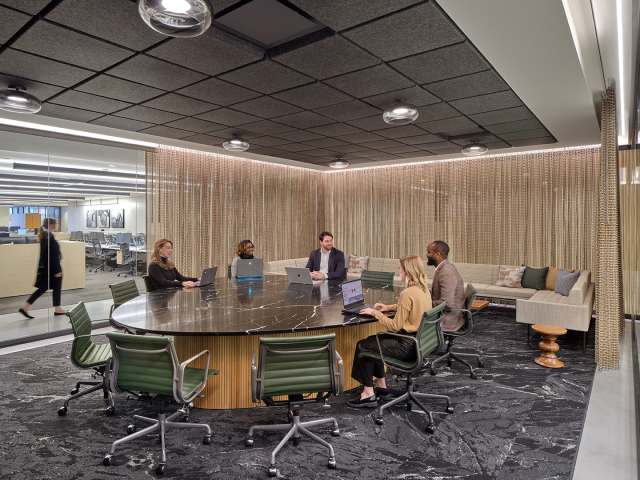Navigating Change: 3 Workplace Strategies for Business Leaders
Business leaders need to have a more dynamic and collective approach to problem-solving, fostering responsiveness to challenges while maintaining a delicate balance between risks and opportunities. Then, they can navigate uncertainties and position themselves for success in an ever-evolving market.

Sign up to get these in your inbox each month!
From our conversation with Corrine Murray, Agate Studio, on WorkPoints, season 1, episode 3.
Following a year marked by economic uncertainty and rapid changes in the tech industry, many business leaders find themselves at a crossroads, unsure of the steps to take towards the future. The key lies in identifying and addressing any underlying questions or problems that may hinder your progress. In this article, originally from our conversation with Corrine Murray of Agate Studio, we explore the core competencies you need for effective workplace engagement in times of uncertainty. Corrine’s conversation with Jade Franklin, VP Workplace Strategy, was originally shared during season 1, episode 3 of our podcast, WorkPoints.
Understanding the Client's Struggles
Many leaders find themselves uncertain about the next steps to take. When you’re working with clients, it can be meaningful to encourage open discussions about the challenges they face. Delve into the issues causing them hesitation, seeking to understand the underlying reasons behind their roadblocks. Is it a reluctance to invest in uncertain solutions? Perhaps it involves apprehension from executives wary of experimentation due to perceived risks. There is a myriad of valid responses, and successful approaches revolve around mitigating the risks associated with change and experimentation. Acting as a versatile partner, you can adapt to each client's unique needs, akin to a chameleon navigating the diverse landscape of organizational challenges. By delving into the root causes of their concerns, you’ll be able to tailor solutions that align with the unique needs of each company.

Bridging Communication Gaps
The Evolving Landscape of Decision Makers
Over the past three years, the landscape of decision makers has evolved, from a traditional six to eight stakeholders influencing every project, to new stakeholders like HR becoming involved, right along with the CEO and CFO. Successful engagements and workshops now hinge on active participation and willingness to negotiate with all decision makers. The aim is to foster a collective approach with a shared purpose.
In navigating the complexities of organizational dynamics, you may often find yourself playing the role of diplomat. Balancing the diverse missions of executive leadership, HR, and real estate requires adept negotiation and a focus on common goals.
It's crucial to adopt a highly responsive strategy when addressing challenges—one that not only preserves the bottom line but also safeguards our existing workforce. Even in times like these, retaining the talent already within your organization proves to be more cost-effective than seeking new talent externally. Balancing the inherent risks and opportunities within the organization becomes paramount in maintaining a resilient and sustainable business approach.
The overarching purpose is to encourage business leaders to have a more dynamic and collective approach to problem-solving, fostering responsiveness to challenges while maintaining a delicate balance between risks and opportunities.

Conclusion
In a rapidly changing business landscape, effective client engagement requires a multifaceted approach. Professionals must not only understand and address the root causes of their client's challenges but also act as facilitators, negotiators, and integrators. By fostering collaboration and communication among decision makers, organizations can navigate uncertainties and position themselves for success in an ever-evolving market.























